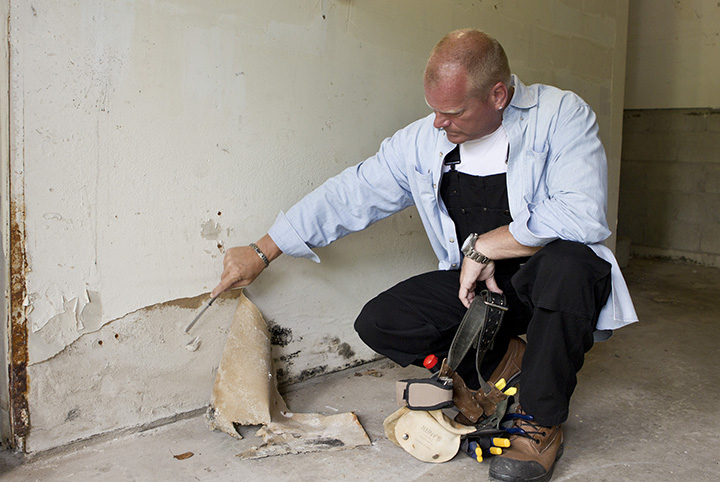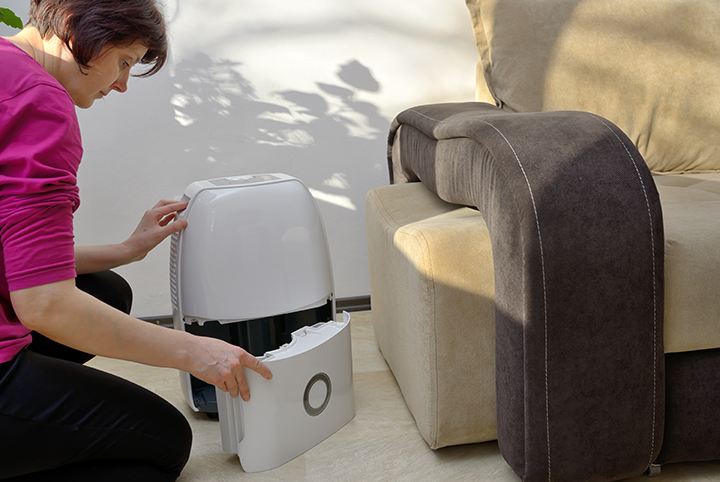
Mike Holmes is one of HGTV Canada’s go-to contractors and the host of Holmes and Holmes, Holmes: Buy it Right and Home to Win.
If you look closely and pay attention to the warning signs, your home could be showing evidence of excess moisture. We create moisture in our homes from everyday activities – taking a shower, cooking, and even breathing. However, it’s important to maintain healthy levels of moisture. If not, our homes will develop all sorts of issues. Be on the lookout for these telltale signs:

- Poor Ventilation
Your home needs to breathe. The moisture we create inside needs to escape or it will cause poor air quality, leading to issues with mould and rot. Many of the newer homes are built to be airtight, which is great for energy efficiency. But you don’t want your home to be too airtight. The fresh outdoor air needs to be brought inside, while the moisture-filled, stale air from inside needs to be expelled.
The best way to deal with poor ventilation is to install a Heat Recovery Ventilator (HRV). Connecting to your existing forced-air heating system or a specially installed network of outdoor air ducts, the HRV will have two fans. One fan will expel the indoor air from inside to the outdoors, and the other will bring fresh outdoor air into your home. It will maintain a good balance of ventilation in your home.
Installing an Energy Recovery Ventilator (ERV) will take things a step further by stabilizing humidity levels, which will reduce the work of your air conditioner and dehumidifier.
2. Condensation
Condensation can be a result of too much moisture in your home. Notice the moisture that’s created when you cook something on the stove or when you boil the kettle? The moisture can even build up on your windows. This isn’t a good thing.

Turn your extractor fan on in the kitchen to prevent the moisture build-up, and leave it on for longer than you are cooking. The same can be said for when you’re taking a shower or bath. If you have a bathroom window, open it a little and turn the extractor fans on to stop condensation from forming. Of course, condensation in your home can also be caused by poor window insulation (which means they might need to be replaced) or lack of insulation in your attic. Read on for 9 more signs that it might be time to replace your windows.
3. Poor Insulation
If your home is not properly insulated, moisture will build-up when the warm air from inside your home meets the cold air from outside (or the opposite will occur in the summer when the cool air-conditioned air meets the warm summer air outside). Poor insulation can cause moisture to build-up behind your walls and in your attic, which will lead to mould growth. Are your floors and walls constantly cold in the winter? Do you notice ice damming on your roof? Do you have high energy bills? These are all signs that your home may be poorly insulated. Don’t ignore the signs.

The last thing you want is excessive mould growth in your home. If you suspect that your home is poorly insulated, your best bet is to call a certified home inspector with a thermal imaging camera. With the use of the thermal imaging camera, the inspector can help identify exactly where in your home the insulation is lacking.
4. Humidity Levels
High humidity levels are not only bad for your home, but they can also cause health issues for you and your family. Mould and mildew thrive in humid conditions, which can lead to allergies and asthma. Most homeowners can tell when the air inside their home doesn’t quite feel right, and pets will also feel the effects. High humidity can cause your skin to feel clammy and you’ll likely have problems getting a good night’s sleep.

Having a dehumidifier will help pull that excess moisture out of the air. It works like a vacuum cleaner, sucking in air from your home at one end, removing the excess moisture, and then blowing it back into your home again. The moisture collects into a container that you’ll have to empty from time to time. You’ll be able to tell the level of humidity in your home by the number of times you have to empty the dehumidifier. A dehumidifier is great in the summer. For the winter months, I’d recommend installing an HRV.
You should always pay attention to what your home may be telling you. Signs of excess moisture can be obvious, but they can also be hard to identify. And you may need to call in the professionals to find the source. But trust me – you don’t want to ignore signs of excess moisture in your home. If you do, you’ll end up dealing with some serious issues down the road. Make it right and address the problems head-on; you’ll end up saving yourself a lot of time and money in the long run.
Images courtesy of The Holmes Group and Getty Images.
HGTV your inbox.
By clicking "SIGN UP” you agree to receive emails from HGTV and accept Corus' Terms of Use and Corus' Privacy Policy.



